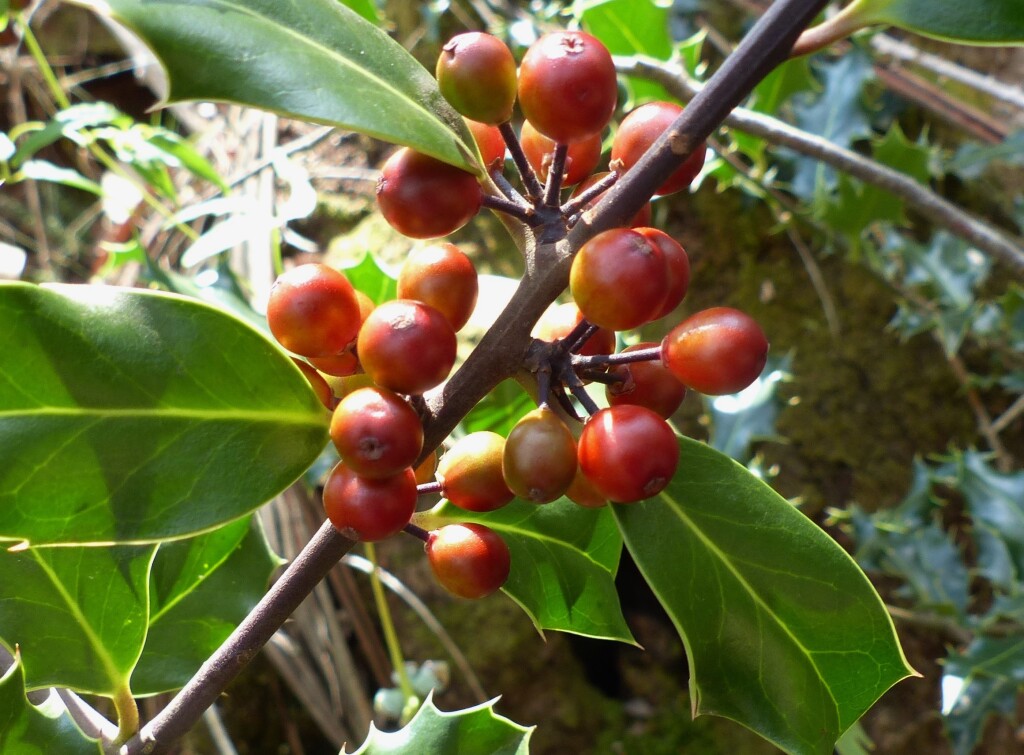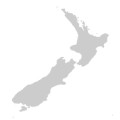Ilex aquifolium
L. English HollyEvergreen shrub or small tree to 10 m high, glabrous except for pubescent new growth and inflorescences; bark pale grey. Leaves ovate, elliptic or oblong, 3–10 cm long, 2.5–5 cm wide, apex acute, spine-tipped, margins undulate, spinose-dentate, sometimes entire on old trees, coriaceous, dark green and shiny above, paler and dull below; petiole 5–15 mm long, grooved. Cymes 3-flowered, clustered in axillary fascicles, rarely female flowers solitary; pedicels to c. 3 mm long. Flowers dull white or pinkish, fragrant; sepals triangular-ovate, c. 1.5 mm long, free in upper half; petals elliptic, 2–5 mm long; stamens half as long as petals; anthers c. 1.5 mm long. Drupe ovoid or globose, 7–10 mm long, 6–10 mm diam., bright red; pyrenes usually 4–5, ribbed. Flowers mostly late spring–summer.
GleP, VVP, VRiv, GipP, OtP, WaP, CVU, GGr, EGL, HSF, HNF, OtR, Strz, MonT, VAlp. Also naturalised SA, NSW. Native of Europe. A popular garden ornamental becoming established in a few cooler, higher rainfall parts of the State. It is a troublesome weed in the Dandenong Ranges and near Mt Donna Buang to the east of Melbourne.
Jeanes, J.A. (1999). Aquifoliaceae. In: Walsh, N.G.; Entwisle, T.J., Flora of Victoria Vol. 4, Cornaceae to Asteraceae, pp. 54–55. Inkata Press, Melbourne.
 Spinning
Spinning



